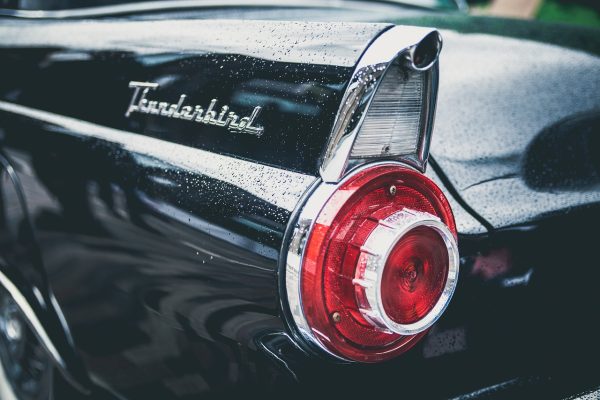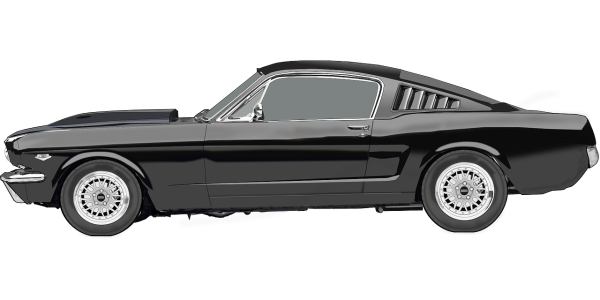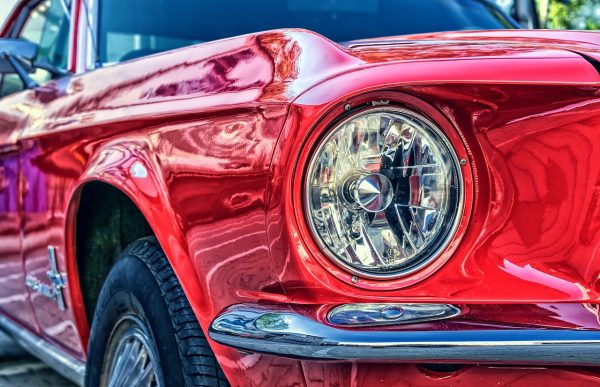
Vehicle clear coat is a transparent, high-gloss layer of paint applied over a car’s colored base coat. This outermost layer is essential for modern automotive finishes, as it provides both aesthetic and protective qualities. Without a clear coat, the car’s base paint would be directly exposed to the elements, making it susceptible to fading, scratches, and oxidation. The clear coat not only enhances the vibrancy of the car’s color but also gives it a polished, professional appearance.
This protective layer is typically made from a type of resin, such as polyurethane or acrylic, designed to withstand the rigors of daily driving. Advances in automotive technology have led to the development of clear coats with additional features, such as UV inhibitors and scratch-resistant properties. Whether applied at the factory or during a professional repaint, clear coat is a vital component of a vehicle’s exterior finish, ensuring durability and maintaining its visual appeal.
Why Is Clear Coat Important on a Car?
Clear coat serves as the car’s first line of defense against environmental damage. Without it, the base paint would be prone to discoloration and wear caused by exposure to sunlight, rain, dirt, and chemicals. The clear coat contains UV-resistant materials that prevent the sun’s rays from breaking down the pigments in the base paint, thereby preserving the car’s original color and preventing fading.
Another critical function of the clear coat is its role in enhancing the car’s aesthetic appeal. This glossy layer gives the vehicle a reflective, polished finish that makes the color appear deeper and more vibrant. Beyond visual appeal, the clear coat helps make cleaning and maintaining the car easier. Dirt, grime, and water slide off the slick surface more readily, making regular washing less labor-intensive.
The clear coat adds a layer of protection against minor damage, such as small scratches and abrasions. While it can’t prevent all forms of damage, it does act as a sacrificial layer that takes the brunt of wear and tear, helping to preserve the integrity of the underlying paint.

What Is the Purpose of Clear Coat on a Car?
The clear coat serves as the first line of defense for your car’s paint, acting as a protective shield over the base coat. It prevents environmental damage from elements like UV rays, moisture, dirt, and road debris. Without a clear coat, the paint would fade and degrade much faster, leaving the car vulnerable to rust and corrosion.
In addition to its protective role, the clear coat enhances the car’s overall appearance by adding a glossy, polished finish. This layer amplifies the vibrancy of the base paint, giving it depth and making colors look richer and more luxurious. For anyone who values the aesthetic appeal of their vehicle, maintaining the clear coat is essential.
The clear coat also improves the durability of the car’s paint, ensuring it can withstand daily wear and tear. It acts as a buffer, taking minor scratches and abrasions while keeping the underlying paint intact. In this way, the clear coat preserves both the functionality and beauty of the car’s finish.
The Importance of Clear Coat for Car Longevity
The clear coat on a car not only maintains its beauty but also extends its lifespan. By protecting the base paint, it minimizes the risk of rust and corrosion, especially in areas prone to high humidity, road salt, or extreme weather. Cars with well-maintained clear coats are less likely to require expensive repainting and tend to hold their value better over time.
For car owners looking to enhance their vehicle’s finish further, applying a ceramic or graphene coating on top of the clear coat is an excellent option. These treatments provide long-lasting protection against environmental damage and create an ultra-glossy, hydrophobic surface that repels water and dirt. Regular maintenance, such as clay bar treatments to remove contaminants and polishing to correct minor imperfections, can also help keep the clear coat in top condition.

How Can I Tell If My Car Has a Clear Coat?
Determining whether your car has a clear coat is relatively simple. Most vehicles manufactured after the 1980s come with a factory-applied clear coat. To check, take a clean white cloth and apply a small amount of polish or cleaner. Gently rub it on an inconspicuous area of the car, such as under the hood or on the door frame.
If the cloth picks up the color of the paint, it indicates that the car does not have a clear coat. However, if no color transfers to the cloth, the vehicle is protected by a clear coat. This test can help you understand your car’s paint composition and guide you in choosing the appropriate maintenance methods.
Knowing whether your car has a clear coat is crucial for proper care. Cars without clear coats require more frequent waxing and polishing to maintain their appearance and protect the paint. On the other hand, vehicles with clear coats can benefit from specialized treatments like ceramic coatings or sealants to extend the life of the protective layer.
What Are the Benefits of Having a Clear Coat?
The benefits of a clear coat go far beyond basic protection. One of its most notable advantages is the enhancement of the car’s appearance. The glossy finish provided by the clear coat makes the paint look smoother and more luxurious, giving the vehicle a showroom-like quality. A well-maintained clear coat can significantly elevate the visual appeal of any car, ensuring that it looks its best for years to come.
Clear coats also improve the durability of a vehicle’s exterior. By providing a shield against UV rays, they reduce the risk of paint oxidation and fading, which are common problems in sunny climates. Additionally, clear coats make vehicles more resistant to chemical stains from bird droppings, tree sap, and road salt, which can otherwise cause permanent damage to unprotected paint.
Another significant benefit is the ease of repairs. Small scratches or swirl marks that appear on the clear coat can often be polished out without requiring a full repaint. This feature is especially useful for car owners who want to maintain their vehicle’s appearance without incurring high repair costs. Clear coats enhance the effectiveness of aftermarket treatments, such as ceramic coatings or paint sealants, which can be applied to further protect and enhance the vehicle’s finish.

ford mustang with clear coat on red car
Which Clear Coat Provides the Thickest Layer?
The thickness of a clear coat depends on the product and application method, with factory-applied coats typically ranging from 1.5 to 2 mils (thousandths of an inch). However, aftermarket clear coats often provide a thicker layer, offering increased durability and protection. Products such as high solid clear coats are particularly notable for their thickness. These coatings have a higher concentration of resin, creating a more substantial barrier and a glossier finish. An example of such a product is PPG Deltron 2021 High Solids Clear, frequently used in professional auto refinishing.
Ceramic-infused clear coats are another option for those seeking advanced protection. These modern coatings incorporate ceramic particles that increase scratch resistance and longevity. Vehicles treated with ceramic clear coats often experience superior resistance to minor scratches, chemical etching, and UV damage.
When choosing a clear coat, it’s important to consider the vehicle’s needs, intended use, and budget. A professional detailer or body shop can help assess the best option, ensuring a durable, attractive finish that suits your car’s specific requirements.
Can a Damaged Clear Coat Be Repaired?
Yes, but the method of repair depends on the extent of the damage. Minor scratches, swirl marks, or dullness in the clear coat can often be corrected with buffing or polishing. These processes involve using a polishing compound or machine buffer to smooth the surface, restoring the clear coat’s shine and clarity.
For more severe damage, such as peeling or deep scratches that penetrate through the clear coat, professional intervention may be required. A body shop can sand down the damaged area and reapply the clear coat, ensuring a seamless finish. However, this process can be costly, so it’s best to address issues early to prevent them from worsening.
Neglecting a damaged clear coat can lead to further problems, as the exposed base coat becomes vulnerable to fading, rust, and corrosion. Regular maintenance, such as applying wax or ceramic coatings, can help prolong the life of the clear coat and minimize the need for extensive repairs.
How Do I Maintain My Car’s Clear Coat?
Maintaining your car’s clear coat involves regular cleaning and protective treatments. Washing your car at least once a week with a pH-balanced car shampoo prevents dirt and contaminants from building up and causing scratches. Always use a soft microfiber cloth or sponge to avoid creating swirl marks on the surface.
Waxing is another essential step in clear coat care. Applying wax every three to four months provides an additional layer of protection against UV rays, water spots, and minor abrasions. Wax also enhances the car’s shine, keeping the clear coat looking fresh and vibrant. For longer-lasting protection, consider using a sealant or ceramic coating.
Avoid harsh chemicals and abrasive cleaning tools, as they can wear down the clear coat over time. Parking in shaded areas or using a car cover helps protect the clear coat from prolonged sun exposure, which can lead to fading and oxidation. With proper care, the clear coat can maintain its protective and aesthetic properties for years.

The Different Types of Clear Coats
Yes, there are several types of clear coats, each with unique properties suited to different needs. Acrylic clear coats, for instance, were common in older vehicles but are less durable than modern options. They provide a smooth finish but may require frequent maintenance.
Urethane clear coats are the most widely used today due to their durability and resistance to UV rays. These clear coats offer excellent protection and a glossy finish, making them a popular choice for both factory applications and professional repaints.
For those seeking enhanced protection, high solids clear coats and ceramic clear coats are excellent options. High solids clear coats contain a higher concentration of resins, resulting in a thicker and more protective layer. Ceramic clear coats incorporate advanced materials that make the surface harder and more resistant to scratches, water spots, and chemical stains. Choosing the right clear coat depends on your vehicle’s requirements, budget, and desired level of protection.
Does Clear Coat Make My Car Scratch-Proof?
No, clear coat does not make your car entirely scratch-proof, but it does offer a layer of protection against minor damage. The clear coat absorbs small scratches and abrasions, preventing them from reaching the base paint. This makes the vehicle easier to maintain and keeps it looking new for longer.
Some advanced clear coats, such as ceramic-infused ones, provide increased scratch resistance. These coatings are harder than traditional clear coats and can withstand more wear and tear. However, they are not impervious to deep scratches caused by sharp objects or heavy impacts.
To minimize scratches, practice safe washing techniques, such as using two buckets (one for soapy water and one for rinsing) and high-quality microfiber towels. Protective treatments like ceramic coatings or paint protection films can further enhance the scratch resistance of the clear coat, giving your car’s finish added durability.
Peeling Clear Coat and How It Can Be Prevented
Peeling clear coat, often referred to as “clear coat failure,” occurs when the protective layer begins to separate from the base paint. This issue is commonly caused by prolonged exposure to sunlight, where UV rays break down the clear coat’s chemical bonds over time. Other factors, such as poor application during manufacturing or improper repainting, can also lead to peeling. Once the clear coat starts to peel, the underlying paint becomes exposed, making the car more vulnerable to fading, rust, and further damage.
One of the most effective ways to prevent peeling is regular maintenance of the clear coat. Washing your car frequently removes dirt, salt, and other contaminants that can degrade the surface. Applying a high-quality wax or sealant every few months protects the clear coat from UV rays and environmental wear. For long-term protection, ceramic coatings or paint protection films can provide a durable shield against the elements.
Avoiding harsh cleaning products or abrasive tools is also essential, as these can weaken the clear coat and accelerate peeling. Parking in shaded areas or using a car cover minimizes UV exposure, while professional treatments like clay bar applications and polishing can help keep the surface smooth and free of contaminants. Addressing small scratches and chips promptly is critical, as these can create entry points for moisture and chemicals that lead to peeling.
If clear coat peeling has already begun, repair options will depend on the extent of the damage. Small areas may be sanded and re-coated, but larger sections often require a full repaint. Preventative care is far less costly and time-consuming than repairing extensive clear coat failure, making regular maintenance the best strategy for preserving your car’s finish.
Clear Coat for a Car
Clear coat is important because it protects your car’s paint and keeps it looking good. It acts like a shield, blocking harmful UV rays, weather, dirt, and small scratches from damaging the paint underneath. Without it, the paint can fade, peel, or rust over time. The clear coat also makes the car’s color look brighter and shinier, giving it a polished finish. Taking care of the clear coat helps your car stay in good shape and keeps its value high.

